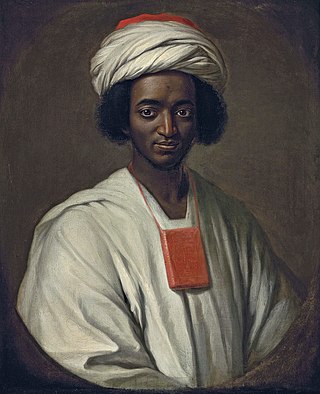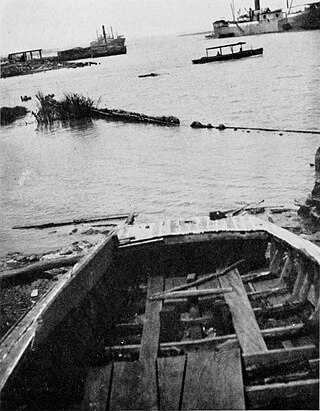
The Atlantic slave trade or transatlantic slave trade involved the transportation by slave traders of enslaved African people, mainly to the Americas. The outfitted European slave ships of the slave trade regularly used the triangular trade route and its Middle Passage, and existed from the 16th to the 19th centuries. The vast majority of those who were transported in the transatlantic slave trade were from Central and West Africa who had been sold by West African slave traders mainly to Portuguese, British, Spanish, Dutch, and French slave traders, while others had been captured directly by the slave traders in coastal raids; European slave traders gathered and imprisoned the enslaved at forts on the African coast and then brought them to the Americas. Except for the Portuguese, European slave traders generally did not participate in the raids because life expectancy for Europeans in sub-Saharan Africa was less than one year during the period of the slave trade. Portuguese coastal raiders found that slave raiding was too costly and often ineffective and opted for established commercial relations.
Spirituals is a genre of Christian music that is associated with African Americans, which merged varied African cultural influences with the experiences of being held in bondage in slavery, at first during the transatlantic slave trade and for centuries afterwards, through the domestic slave trade. Spirituals encompass the "sing songs", work songs, and plantation songs that evolved into the blues and gospel songs in church. In the nineteenth century, the word "spirituals" referred to all these subcategories of folk songs. While they were often rooted in biblical stories, they also described the extreme hardships endured by African Americans who were enslaved from the 17th century until the 1860s, the emancipation altering mainly the nature of slavery for many. Many new derivative music genres such as the blues emerged from the spirituals songcraft.

Hoodoo is a set of spiritual practices, traditions, and beliefs that were created by enslaved African Americans in the Southern United States from various traditional African spiritualities and elements of indigenous botanical knowledge. Practitioners of Hoodoo are called rootworkers, conjure doctors, conjure men or conjure women, and root doctors. Regional synonyms for Hoodoo include rootwork and conjure. As a syncretic spiritual system, it also incorporates beliefs from Islam brought over by enslaved West African Muslims, and Spiritualism. Scholars define Hoodoo as a folk religion. It is a syncretic religion between two or more cultural religions, in this case being African indigenous spirituality and Abrahamic religion.

Abdul Rahman Ibrahima ibn Sori was a Fula prince and Amir (commander) from the Fouta Djallon region of Guinea, West Africa, who was captured and sold to slave traders and transported to the United States in 1788. Upon discovering his lineage, his enslaver, Thomas Foster, began referring to him as "Prince", a title used for Abdul Rahman until his final days. After spending 40 years in slavery, he was freed in 1828 and returned to Africa the following year, but died in Liberia within months of arrival.

Ayuba Suleiman Diallo (1701–1773), also known as Job Ben Solomon, was a prominent Fulani Muslim prince from West Africa who was kidnapped and trafficked to the Americas during the Atlantic slave trade, having previously owned and sold slaves himself.

The history of slavery spans many cultures, nationalities, and religions from ancient times to the present day. Likewise, its victims have come from many different ethnicities and religious groups. The social, economic, and legal positions of slaves have differed vastly in different systems of slavery in different times and places.

Slavery has historically been widespread in Africa. Systems of servitude and slavery were common in parts of Africa in ancient times, as they were in much of the rest of the ancient world. When the trans-Saharan slave trade, Red Sea slave trade, Indian Ocean slave trade and Atlantic slave trade began, many of the pre-existing local African slave systems began supplying captives for slave markets outside Africa. Slavery in contemporary Africa is still practised despite it being illegal.
A shout or ring shout is an ecstatic, transcendent religious ritual, first practiced by African slaves in the West Indies and the United States, in which worshipers move in a circle while shuffling and stomping their feet and clapping their hands. Despite the name, shouting aloud is not an essential part of the ritual.

Cudjoe Kazoola Lewis, born Oluale Kossola, and also known as Cudjo Lewis, was the third to last adult survivor of the Atlantic slave trade between Africa and the United States. Together with 115 other African captives, he was brought to the United States on board the ship Clotilda in 1860. The captives were landed in backwaters of the Mobile River near Mobile, Alabama, and hidden from authorities. The ship was scuttled to evade discovery, and remained undiscovered until May 2019.

The schooner Clotilda was the last known U.S. slave ship to bring captives from Africa to the United States, arriving at Mobile Bay, in autumn 1859 or on July 9, 1860, with 110 African men, women, and children. The ship was a two-masted schooner, 86 feet (26 m) long with a beam of 23 ft (7.0 m).

Africatown, also known as AfricaTown USA and Plateau, is a historic community located three miles (5 km) north of downtown Mobile, Alabama. It was formed by a group of 32 West Africans, who in 1860 were bought and transported against their will in the last known illegal shipment of slaves to the United States. The Atlantic slave trade had been banned since 1808, but 110 slaves held by the Kingdom of Dahomey were smuggled into Mobile on the Clotilda, which was burned and scuttled to try to conceal its illicit cargo. More than 30 of these people, believed to be ethnic Yoruba, Ewe, and Fon, founded and created their own community in what became Africatown. They retained their West African customs and language into the 1950s, while their children and some elders also learned English. Cudjo Kazoola Lewis, a founder of Africatown, lived until 1935 and was long thought to be the last survivor of the slaves from the Clotilda living in Africatown.

The history of slavery in the Muslim world began with institutions inherited from pre-Islamic Arabia. The practices of keeping slaves in the Muslim world nevertheless developed in radically different ways in different Muslim states based on a range of social-political factors, as well as the more immediate economic and logistical considerations of the Arab slave trade. As a general principle, Islam encouraged the manumission of Muslim slaves as a way of expiating sins, and many early converts to Islam, such as Bilal, were former slaves. However, Islam never banned the practice, and it persisted as an important institution in the Muslim world through to the modern era.
The Wesley Logan Prize is an annual prize given to a historian by the Association for the Study of Afro-American Life & History

Barracoon: The Story of the Last "Black Cargo" is a non-fiction work by Zora Neale Hurston. It is based on her interviews in 1927 with Oluale Kossola who was presumed to be the last survivor of the Middle Passage. Two female survivors were subsequently recognized but Cudjoe continued to be identified as the last living person with clear memories of life in Africa before passage and enslavement.

Redoshi was a West African woman who was enslaved and smuggled to the U.S. state of Alabama as a girl in 1860. Until a later surviving claimant, Matilda McCrear, was announced in 2020, she was considered to have been the last surviving victim of the transatlantic slave trade. Taken captive in warfare at age 12 by the West African kingdom of Dahomey, she was sold to Americans and transported by ship to the United States in violation of U.S. law. She was sold again and enslaved on the upcountry plantation of the Washington M. Smith family in Dallas County, Alabama, where her owner renamed her Sally Smith.
Timothy Meaher was an American slave trader, son of an Irish immigrant father and an Anglo-Irish American mother. He was raised in rural Whitefield, Maine. In his 20s, he moved to Mobile, Alabama where he became a wealthy human trafficker, businessman and landowner. He built and owned the slave-ship Clotilda and was responsible for illegally smuggling the last enslaved Africans into the United States in 1860.
Matilda McCrear was the last known living survivor in the United States of the transatlantic slave trade and the ship Clotilda. She was a Yoruba who was captured and brought to Mobile, Mobile County, Alabama at the age of two with her mother and older sister.

The Trans-Saharan slave trade, also known as the Arab slave trade, was a slave trade in which slaves were mainly transported across the Sahara. Most were moved from sub-Saharan Africa to North Africa to be sold to Mediterranean and Middle Eastern civilizations; a small percentage went the other direction. Estimates of the total number of black slaves moved from sub-Saharan Africa to the Arab world range from 6-10 million, and the trans-Saharan trade routes conveyed a significant number of this total, with one estimate tallying around 7.2 million slaves crossing the Sahara from the mid-7th century until the 20th century when it was abolished. The Arabs managed and operated the trans-Saharan slave trade, although Berbers were also actively involved. Alongside Black Africans, Turks, Iranians, Europeans and Berbers were among the people traded by the Arabs, with the trade being practised throughout the Arab world, primarily in Western Asia, North Africa, East Africa, and Europe.

The Indian Ocean slave trade, sometimes known as the East African slave trade or Arab slave trade, was multi-directional slave trade and has changed over time. Captured in raids primarily south of the Sahara, predominately black Africans were traded as slaves to the Middle East, Indian Ocean islands, Indian subcontinent, and Java. Beginning in the 16th century, they were traded to the Americas, including Caribbean colonies.

Slavery existed in Morocco since antiquity until the 20th-century. Morocco was a center of the Trans-Saharan slave trade route of enslaved Black Africans from sub-Saharan Africa until the 20th-century, as well as a center of the slave trade of Barbary slave trade of Europeans captured by the barbary pirates until the 19th-century. The open slave trade was finnally suppressed in Morocco in the 1920s. The haratin and the gnawa have been referred to as descentants of former slaves.











